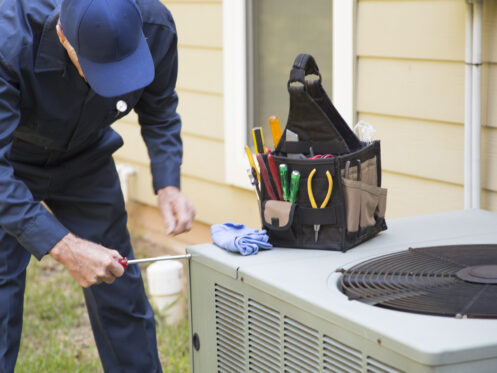With daytime temperatures in Louisville, KY often holding steady in the mid-80s, it’s important to have functional home cooling equipment. Although locals rarely deal with triple-digit heat waves, the air in building interiors is often much warmer than the air outdoors. With a brand-new air conditioner, you can enjoy reliable temperature control, effective humidity regulation, and a consistently high indoor air quality (IAQ). A new AC will also allow for lower home energy bills and other impressive savings. Read on to discover 10 solid benefits of replacing your AC.
1. All-New Warranty Protections
New air conditioners come with new manufacturer warranties. These mutually binding agreements cover the costs of repairing or replacing air conditioners due to problems caused by incorrect assembly, defective or low-quality parts, and other manufacturer errors. Most air conditioners come with two- to five-year limited parts warranties and five- to 10-year warranties on their compressors.
If you have an older air conditioner, your AC warranty is likely either expired or poised to expire soon. Worse still, this expiration tends to occur just when your air conditioner is most likely to break down. According to many HVAC professionals, heating and cooling equipment often experiences the majority of its problems during the last two to three years of its service life.
2. Eliminate Sizing-Related Issues
You can find and buy new air conditioners at a variety of hardware and big box stores. Many homeowners make the mistake of purchasing these appliances without first consulting with HVAC companies. Buying and installing your own AC can lead to countless problems, including having cooling equipment that’s either too large or too small for its intended service area.
Oversized air conditioners often cycle on and then rapidly cycle back off. They rarely get the chance to fully regulate indoor humidity, and they can’t maintain consistently comfortable indoor conditions. In contrast, undersized air conditioners run nearly all of the time. Despite having longer and more frequent cooling cycles, these units aren’t powerful enough to meet cooling demands.
Whether caused by professionals or the result of a DIY AC replacement, sizing and installation-related problems are both costly and unsafe. When technicians replace air conditioners, they often use what’s called the Manual J load calculation method to ensure accurate sizing. This calculation accounts for building layouts, ceiling heights, household sizes, and other important factors. We also use code-compliant installation techniques to ensure durable and hazard-free electrical connections, responsible refrigerant handling, and optimum levels of AC efficiency.
3. Give Your IAQ a Solid Boost
There’s a good chance that your air conditioner is harboring many allergens and pathogens. Older ACs are often riddled with mildew and mold, dust, dander, pet hair, human hair, and textile and carpet fibers, among other things. These particulates are frequently blown off dirty air filters or drawn into air conditioners via HVAC air duct leaks. They’re a common, age-related problem even when air conditioners receive timely filter changes and annual tune-up services. Replacing your old cooling equipment will eliminate tough, tacky build-ups and ensure that loose, lint-like materials aren’t reentering your indoor air.
4. Minimize Your Cleaning
Boosting your IAQ by replacing your air conditioner can also limit your day-to-day chores. With noticeable IAQ improvements, you’ll have less dust settling on your flooring, counters, and furnishings, and less vacuuming, dusting, and mopping to do. Even with standard HVAC air filters installed, new ACs are better at sieving out airborne contaminants.
5. Lower Your Home Energy Bills
Air conditioners experience progressive efficiency losses over time. In fact, it’s not uncommon for these units to lose nearly half of their efficiency by the mid-point of their service lives. When you shop for new cooling equipment, you’ll get performance that’s perfectly on par with initial efficiency ratings. You’ll also have the opportunity to take advantage of cutting-edge, efficiency-related design upgrades like HVAC zoning, smart thermostats, variable-speed motors, and the latest AC refrigerants.
6. Cut Your Carbon Footprint
People rarely think about their carbon footprints when using their air conditioners. After all, unlike gas-fired furnaces and water heaters, these appliances don’t directly produce greenhouse gases. However, even electrically powered appliances have carbon footprints. Much of the electricity that your AC uses is produced by burning fossil fuels. Also known as gray emissions, the greenhouse gases from electricity production are well worth considering. By investing in a new and more efficient AC that uses less energy, you can reduce these hidden contributions to global warming.
7. Get Rid of Obsolete AC Refrigerant
For many years, Freon or R-22 was the industry standard for residential AC refrigerant. However, regulators outlawed Freon in 2010 and began phasing it out due to high concentrations of ozone-depleting hydrochlorofluorocarbons (HCFCs). In 2020, refrigerant manufacturers stopped producing Freon domestically, and this coolant is no longer being imported. This has left consumers with older ACs fighting for their share of a dwindling Freon supply. It has also led to higher Freon recharge services. In 2024, recharging a Freon-reliant air conditioner could cost as much as $600.
As the standard for residential AC refrigerant continues to change, people with Freon-reliant ACs are having an increasingly harder time finding HVAC technicians who are trained and qualified to handle this coolant. Shopping for a new AC now will give you access to options that use the more eco-friendly Puron refrigerant or the latest generation of AC coolants known as Opteon refrigerants. Opteon refrigerants contain neither HCFCs nor hydrofluorocarbons (HFCs), and they’re currently recognized as the best option for the natural environment.
8. Cut Your Ongoing AC Repair Costs
Even with an active AC manufacturer warranty in place, you could still wind up paying a fair amount of cash for ongoing repairs. Although air conditioners are expected to last at least 15 years, many of their parts are not. After just 10 years of service, you may need to replace your air conditioner’s:
- Evaporator and condenser coils
- Dual capacitor
- Blower fan
- Electrical contacts
Given that these and other components often fail due to general wear rather than manufacturer error, the costs of replacing them often fall on homeowners.
9. Limit the Risk of Home Cooling Emergencies
Aging air conditioners tend to break down right when homeowners need them most. If your AC is on its last leg, a sudden and long-lasting heat wave could push it to its breaking point. Lacking a functional AC when outside temperatures soar places residents at risk of developing heat-related health issues like dehydration and heat exhaustion. You can minimize your risk of these and other problems by simply having new cooling equipment installed.
10. Enjoy Quiet, Inconspicuous Operation
Among the most common signs of advanced air conditioner aging is increased operational noise. If you wait too long to replace your air conditioner, you’ll eventually find it difficult to hold quiet conversations, enjoy deep, restful sleep, or hear your TV while your AC is running. Whether actively cooling or simply cycling off and on, new air conditioners are often whisper-quiet.
We help homeowners in Louisville, KY optimize their home comfort while cutting their heating and cooling costs. We offer expert plumbing, electrical, and HVAC services. We also provide preventative maintenance plans. To find out more about replacing your air conditioner or schedule an appointment, contact Bryant Heating, Cooling, Plumbing & Electric now.



